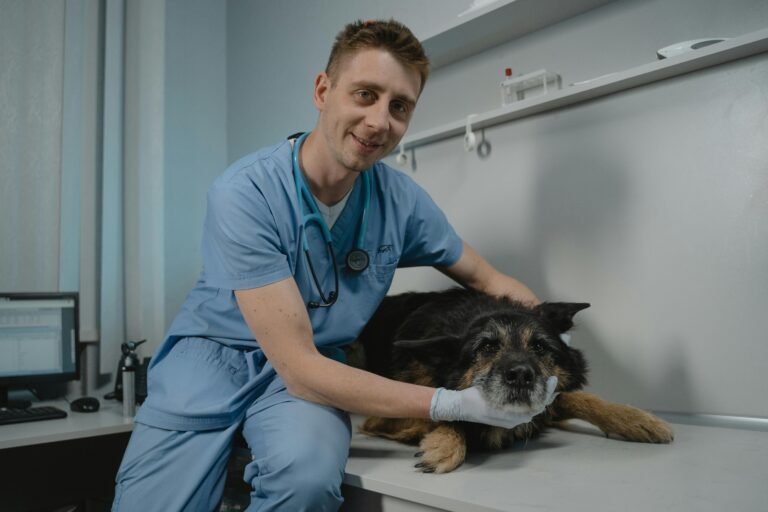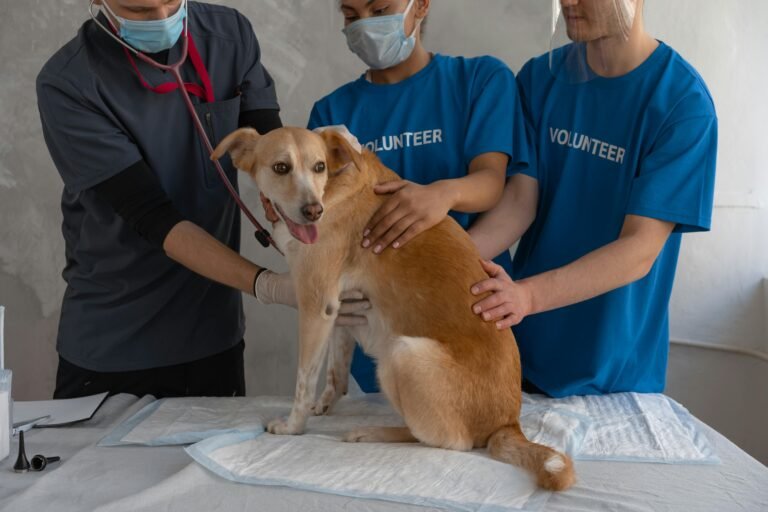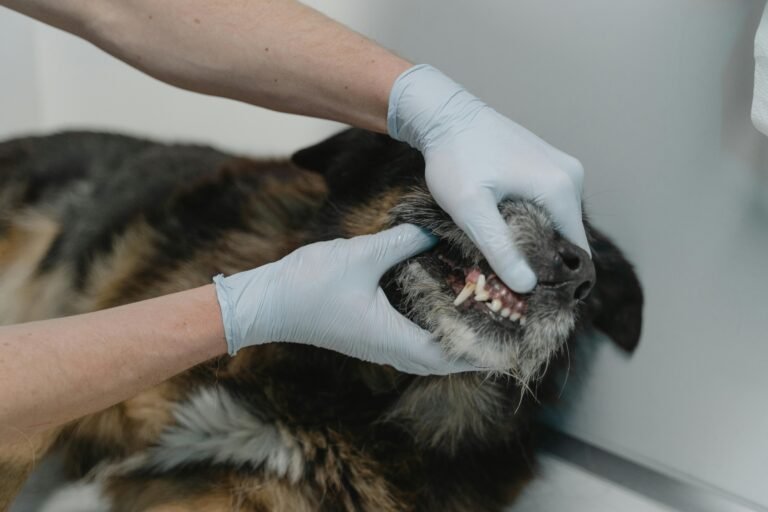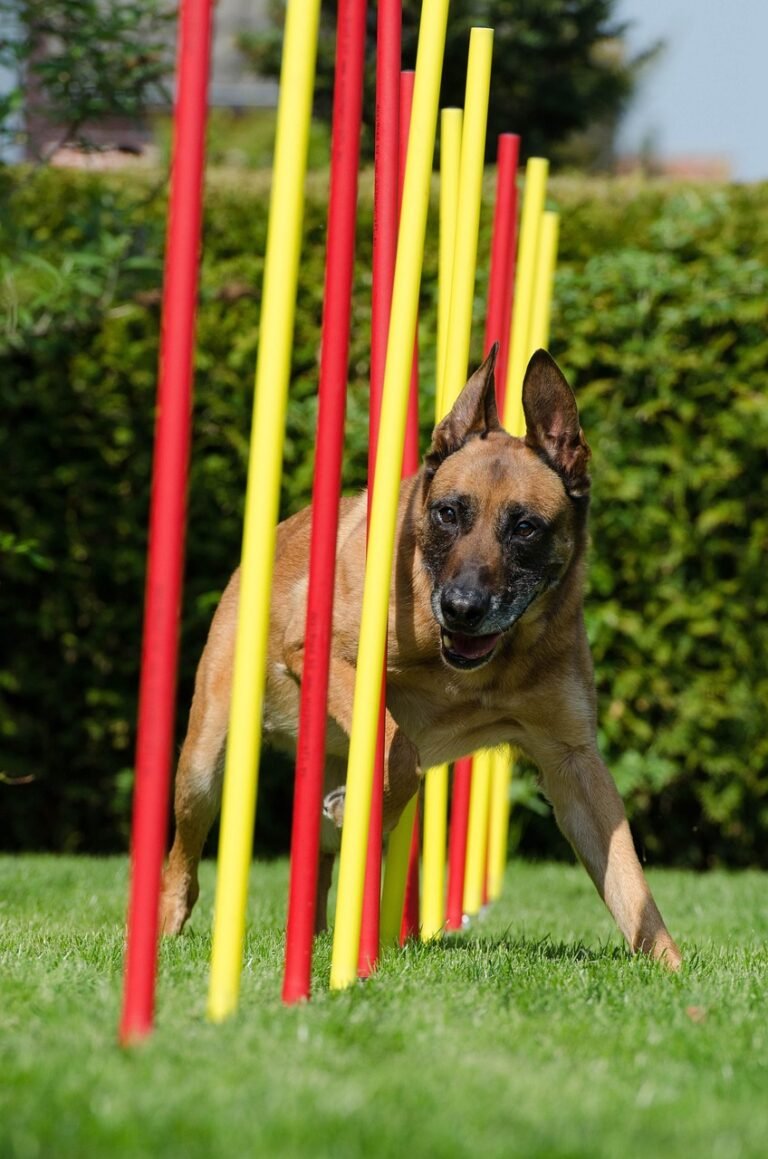Introduction to Canine Anxiety
Anxiety in dogs is a growing concern among pet owners and veterinarians alike, as more awareness is being brought to the psychological well-being of our canine companions. Just like humans, dogs can experience various forms of stress which manifest in their behavior and overall health. This phenomenon is not merely a byproduct of modern living; many dogs have displayed signs of anxiety long before the current age of constant stimulation. In fact, dogs may face anxiety due to a myriad of reasons, including environmental changes, separation from their owners, or even certain genetic predispositions.
Recognizing the signs of anxiety in dogs is crucial for their well-being. Signs may include excessive barking, destructive behavior, trembling, or even loss of appetite. Each dog may exhibit different symptoms based on their individual temperament and experiences. For instance, a dog that has previously experienced trauma may display heightened sensitivity to various stimuli, making it essential for owners to pay close attention to their animals’ reactions and behaviors. Ignoring these signs can lead to a deterioration of a dog’s mental health, resulting in more severe issues such as depression or aggression over time.
Understanding the root causes of canine anxiety can significantly improve the quality of life for our pets. It requires diligent observation and an open line of communication with veterinary professionals who can provide insights into effective treatments and behavioral modification strategies. Proactive pet ownership involves being educated about canine anxiety and its implications. By addressing this concern early on, pet owners can better ensure the emotional stability and happiness of their furry friends, leading to a healthier and more fulfilling relationship.
Excessive Panting and Drooling
Excessive panting and drooling are often primary indicators of anxiety in dogs. These behaviors stem from the dog’s physiological responses to stress, which can vary significantly depending on the situation. When a dog experiences anxiety, it may exhibit changes in its normal breathing patterns, leading to rapid or shallow breaths. This response is aligned with the body’s fight-or-flight mechanism, where the sympathetic nervous system is activated. In such cases, the body’s demand for oxygen increases, prompting dogs to pant as a means to regulate their heart rate and cool down.
Moreover, anxiety can increase saliva production, resulting in excessive drooling. This is particularly prominent in scenarios that induce fear or stress in dogs—such as thunderstorms, fireworks, or being left alone for extended periods. The combination of panting and drooling may be observed together, creating a noticeable behavioral pattern that owners should take seriously. Understanding these signs is crucial for pet owners as they can become warning signals of deeper emotional distress in their canine companions.
For instance, a dog that pants excessively during a car ride may be exhibiting anxiety due to motion sickness or fear of confined spaces. Similarly, scenarios involving unfamiliar situations, such as meeting new people or encountering other animals, can trigger the same physiological responses. If a dog begins to exhibit these symptoms, it is essential to closely monitor their overall behavior and consider environmental factors that could be contributing to their distress.
By recognizing these signs of anxiety, owners can take proactive steps to address their dog’s needs, whether through training, behavioral therapy, or creating a more calming environment. Simple adjustments can significantly enhance a dog’s quality of life and emotional well-being.
Pacing and Restlessness in Dogs
Pacing and restlessness are behavioral manifestations that often indicate anxiety in dogs. When a dog is feeling uneasy, it may engage in repetitive movements, such as walking back and forth in a confined space or continuously shifting its position. These behaviors are not merely habits but manifestations of a dog’s emotional state, reflecting underlying stress or anxiety. Understanding these signs is crucial for pet owners aiming to provide a supportive environment for their furry companions.
The psychological factors leading to such behaviors can vary widely. Dogs are highly sensitive animals, and their environment plays a significant role in shaping their mental state. For instance, a loud thunderstorm or the sounds of fireworks can trigger anxiety, prompting a dog to pace as a coping mechanism. Similarly, major changes in the household, such as moving to a new home, introducing a new pet, or even changes in the owner’s routine, can cause restlessness. In these instances, dogs may struggle to find comfort, resulting in frantic movements as they attempt to manage the tension they are experiencing.
Moreover, dogs may exhibit pacing as a response to separation anxiety. When left alone, some dogs become distressed, leading them to roam around the house in search of their owner or a sense of security. This behavior is often accompanied by other signs of anxiety such as whining, barking, or destructive actions. Identifying these signs early can help dog owners mitigate the anxiety through effective strategies, such as creating a safe space or providing distractions like toys or calming music.
Recognizing pacing and restlessness is vital for addressing anxiety in dogs. By observing these behaviors closely, pet owners can take proactive steps to help their canine companions feel more at ease and secure in their surroundings.
Destructive Behavior in Anxious Dogs
Destructive behavior in dogs often emerges as a notable indication of underlying anxiety. Many pet owners might observe their canine companions engaging in actions such as chewing furniture, scratching walls, or digging excessively. These behaviors are not mere acts of mischief but rather coping mechanisms that dogs employ to manage stress and anxiety. Such behaviors are instinctive responses that may surface when a dog feels threatened or overwhelmed in their environment.
When a dog is anxious, their perception of reality can be significantly skewed. They may feel the need to alleviate their discomfort through physically destructive activities. For instance, chewing on furniture may provide a temporary relief from their anxiety due to the release of endorphins, creating a sense of comfort. Similarly, digging can be a way to express pent-up energy or frustration, as the dog tries to escape from the overwhelming situation they are facing.
It is vital for pet owners to recognize these behaviors as potential signals of distress rather than mere nuisances. Ignoring them can result in long-term repercussions for both the dog and their environment. Unaddressed anxiety-related destructive behavior may escalate over time, leading not only to increased damage within the home but also to additional behavioral issues. Consequently, this can create a vicious cycle where the dog’s anxiety intensifies, leading to further destructive actions. When these behaviors are left unchecked, they could even result in injury to the dog, whether from ingesting non-food items or harming themselves in their attempts to escape or alleviate discomfort.
In understanding the motivations behind these actions, pet owners can better prepare themselves to implement effective solutions and interventions that address the root causes of anxiety in their dogs. This way, they can create a supportive environment that fosters emotional well-being and minimizes the likelihood of destructive behaviors manifesting.
Excessive Barking
Excessive barking in dogs can serve as an important indicator of anxiety, often stemming from various triggers that provoke discomfort or distress. While barking is a normal form of communication in dogs, anxiety-related barking can manifest itself in more pronounced and frequent episodes. Understanding this behavioral difference is crucial for pet owners seeking to identify and mitigate their dog’s stress levels.
Common triggers for anxiety-induced barking may include environmental changes, such as new sounds, unfamiliar visitors, or changes in routine. Additionally, underlying health issues, separation anxiety, or fear of specific situations can lead to an increase in vocalization. It’s essential to observe the circumstances surrounding the excessive barking. For instance, if a dog barks consistently during thunderstorms, this behavior signals fear rather than a typical response. Unlike regular barking, which may be an alert to passersby or a plea for attention, barking driven by anxiety often involves a sense of urgency, distress, or even frustration.
Dog owners should note the context and frequency of the barking. If it occurs exclusively during certain situations or when the dog is left alone, it indicates an underlying anxiety condition rather than a mere alert. Additionally, the tone of the barking may vary. An anxious dog might bark in a higher pitch or with more intensity, reflecting a heightened state of arousal. Recognizing these nuances can aid pet owners in differentiating between standard barking habits and those prompted by anxiety.
Addressing excessive barking due to anxiety requires a combination of approaches. These may include behavioral training, gradual desensitization to triggers, creating a safe space, and consulting a veterinarian for potential medical interventions. Understanding the root cause of excessive barking fosters a better home environment, ensuring the dog’s emotional needs are addressed appropriately.
Hiding and Withdrawal
Dogs, much like humans, exhibit a range of behaviors when they are feeling anxious or stressed. One of the more noticeable tendencies among anxious dogs is their inclination to hide or withdraw from social interactions. This behavior can often be a clear indicator that a dog is experiencing discomfort, fear, or anxiety triggered by various stressors in their environment. When faced with overwhelming stimuli—such as loud noises, unfamiliar surroundings, or even certain social encounters—dogs may instinctively seek solitude as a way to cope.
The act of hiding serves as a natural defense mechanism. In the wild, dogs’ ancestors would retreat to safe spaces when feeling threatened, allowing them to evaluate their situation more calmly and avoid potential dangers. Similarly, modern dogs may choose to withdraw to a quiet area, such as under a bed or in a separate room, as a means of self-soothing when amalgamated by stress. It is important for pet owners to recognize and understand this behavior; a dog that is hiding is not necessarily being aloof or unloving, but rather is responding to perceived threats in their immediate environment.
Additionally, some dogs may display withdrawal in social situations, indicating their discomfort with unfamiliar people, animals, or settings. This behavior often stems from previous negative experiences or a lack of socialization. Dogs that have faced challenges like rough handling or limited exposure to varied environments might be more prone to pulling away from social interactions. By acknowledging and respecting the dog’s need for space, owners can create a more supportive atmosphere, fostering trust and gradually easing their pet’s anxiety. Recognizing the signs of hiding and withdrawal allows for better communication and understanding, ultimately leading to improved well-being for anxious dogs.
Loss of Appetite
Loss of appetite in dogs is a concerning symptom that can be directly linked to anxiety. Just as humans may experience changes in their eating habits due to stress, dogs can also face similar reactions. When a dog is anxious, their body may respond by altering digestion and appetite regulation, leading to both stress-induced nausea and an unwillingness to eat. This physiological response can stem from various triggers, including changes in the environment, unfamiliar noises, or the introduction of new animals or people in their space.
Moreover, anxiety in dogs often disrupts their daily routines, which play a crucial role in their well-being. Dogs thrive on consistency, and any disruptions can contribute to heightened levels of stress. When an anxious dog encounters unexpected changes—such as a new schedule, moving to a different home, or even a simple change in routine—these factors can exacerbate their anxiety and lead to a noticeable loss of appetite. Such behavioral changes indicate that the dog’s mental state is affected, signaling a need for intervention and monitoring.
It is essential for dog owners to be vigilant about their pets’ eating habits. A decreased interest in food can be one of the first signs of anxiety, and early detection is critical for addressing the underlying issues. Regular monitoring of feeding patterns will provide insight into the dog’s mental health. If a dog consistently refuses food or shows reluctance to eat, it may be time to consult with a veterinarian. In doing so, owners can ensure that any anxiety-related factors are evaluated and appropriately managed, promoting a healthier and happier life for their furry companions.
Compulsive Behaviors
Compulsive behaviors in dogs can manifest as a direct response to anxiety, resulting in repetitive actions that may become harmful if not addressed properly. Dogs may engage in various behaviors, including tail chasing, excessive grooming, pacing, or even barking incessantly. These actions can often appear puzzling to pet owners, but they usually stem from an underlying sense of distress or unease.
Tail chasing is one of the most commonly observed compulsive behaviors. It may initially seem like a playful activity, but as the dog continues to chase its tail, it can lead to injuries or skin problems. This behavior is often triggered by stress or boredom, leading the dog to seek solace in the repetitive action of spinning in circles. Similarly, excessive grooming can lead to bald spots or skin irritation, as dogs might obsessively lick or bite at their fur in an attempt to cope with feelings of anxiety.
Pacing is another compulsive behavior that indicates a dog’s inability to relax. A dog that paces may be trying to manage its anxiety by expending nervous energy. This repetitive movement can become exhausting for both the dog and its owner, as the constant back-and-forth can signal deep-seated stress. These compulsive actions can significantly impact a dog’s quality of life, leading to physical injuries and emotional distress if left unaddressed.
The psychological basis for these compulsive behaviors often revolves around a dog’s response to anxiety or stressors in their environment. The repetitive nature of these actions typically provides a sense of relief, albeit temporary, from anxiety. However, these behaviors can become a cycle that exacerbates the anxiety rather than alleviates it. Therefore, it is crucial for dog owners to observe these signs early and seek effective strategies that address the underlying causes of their dog’s anxiety.
Accidents Indoors
Anxiety in dogs can manifest in various behaviors, one of which is having accidents indoors despite previously established house-training. When dogs experience stress or anxiety, their mental state can significantly affect their physiological functions, including their need to relieve themselves. This reaction can often lead to unfortunate situations in the home environment, creating challenges for both the pet and the owner.
When a dog is anxious, it may struggle to control its bladder or bowels. This can occur even if the dog has been reliably housetrained for an extended period. Anxiety can trigger an adrenaline response in the body, causing a flight-or-fight reaction that may override the dog’s typical bladder control. Consequently, the dog may not be able to hold it until it is taken outside, leading to accidents indoors. This typically occurs when the dog is left alone for extended periods, during loud noises like thunderstorms, or when encountering unfamiliar situations and stimuli.
For owners, these accidents can be frustrating and may exacerbate the bond between the pet and the owner. It is essential to recognize that these incidents are not the result of willful disobedience but rather a symptom of the dog’s anxiety. Managing a dog’s anxiety will require close attention to triggers and implementation of supportive strategies, such as creating a safe space for the dog, using calming products, and potentially seeking advice from a veterinarian or animal behaviorist.
The ramifications of indoor accidents extend to affect not only the dog’s well-being but also the owner’s living environment. Regular cleaning may become necessary, and persistent incidents might also lead to stress and frustration for the owners, compounding the original problem. Understanding this behavior is a crucial step toward addressing the underlying anxiety and fostering a healthier, happier living environment for both the dog and its owner.
What to Do: Managing Canine Anxiety
Managing anxiety in dogs requires a multifaceted approach that incorporates environmental modifications, behavioral training, seeking professional help, and, if necessary, veterinary intervention. Recognizing that each dog is unique in their experience of anxiety is crucial. It is important for dog owners to exercise patience and understanding throughout the process.
Environmental modifications can significantly reduce anxiety triggers in dogs. Creating a safe and calming space is essential where the dog can retreat when feeling overwhelmed. This may involve providing a quiet area with comfortable bedding, toys, and familiar scents. Additionally, minimizing exposure to loud noises or chaotic environments can help in alleviating some of their stress. Utilizing tools such as anxiety wraps, pheromone diffusers, or calming music can also contribute to a more soothing environment.
Behavioral training is another effective strategy in managing canine anxiety. Positive reinforcement techniques can be employed to encourage desired behaviors and reduce fear responses. Gradual desensitization can help dogs become accustomed to situations that usually cause anxiety, promoting confidence and resilience over time. Training sessions should be short and enjoyable, ensuring that the dog feels positively supported throughout the process.
In some cases, seeking professional help is essential. A certified dog trainer or behaviorist can provide tailored strategies to address specific anxiety issues, particularly those that seem unmanageable. Furthermore, involving your veterinarian can help rule out any underlying health concerns that may contribute to anxious behavior. If the anxiety persists, veterinary intervention may be necessary, potentially including prescription medications to assist in managing the condition.
Ultimately, dog owners must remain patient and compassionate as they navigate the complexities of canine anxiety. Through consistent effort and a combination of these techniques, it is possible to improve the quality of life for anxious dogs, leading to a healthier, happier companion.






